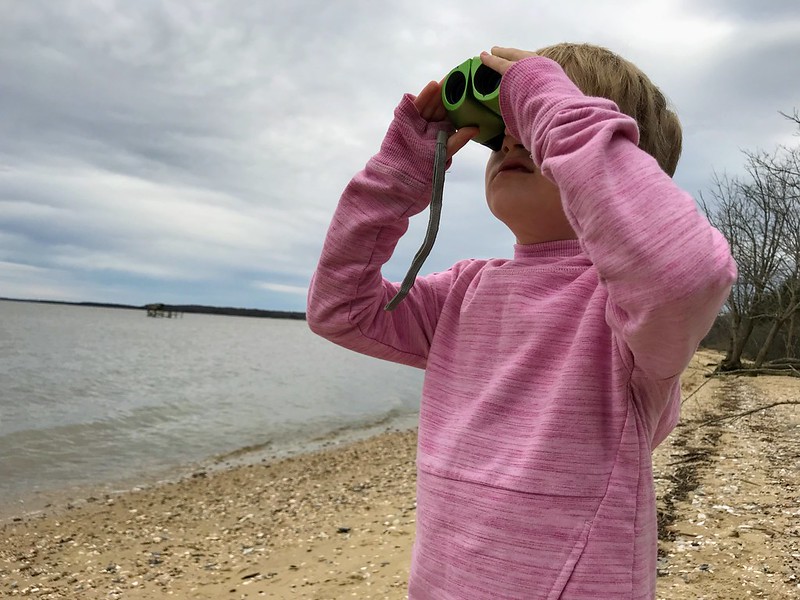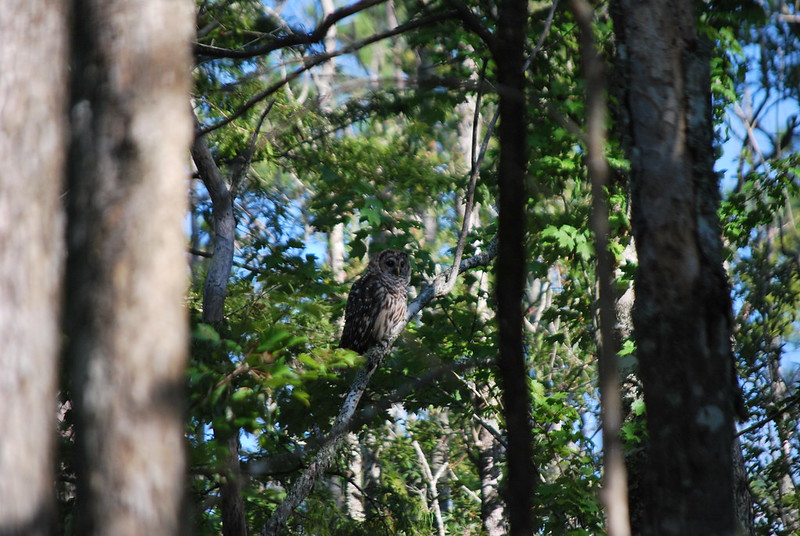Read Our Blogs
Backyard birding – tips to get started
The sweet song of an American Robin, the hammering of a Pileated Woodpecker, the hoot of a Barred Owl or the quick fly-by of a Ruby-throated Hummingbird are some of the joys that attract people to backyard birding. Connecting to nature can happen at home in your own backyard.
As I write this blog, a Carolina Wren is hopping around just a few feet from me, collecting sunflower seeds that have dropped from my bird feeder. His partner has perched on the fence just a few feet away with a beak full of moss, building material for the nest the pair are constructing under my neighbor’s deck. She sings loudly, a gorgeous song that echoes the forest, and the moss from her beak drops to the ground. She searches for it, then glides down to retrieve it. I can’t help but laugh.
In the meantime, a male House Finch flies in. His head, chest, back and rump are a bright crimson red, a stark contrast to his female partner, who is streaky brown all over. They pause to size me up, unsure of this new creature in their habitat. The two move over quickly when a large Red-bellied Woodpecker arrives, not named for its bright red head but the subtle red on its belly. The woodpecker clings vertically to the deck railing, unlike the other perching birds. He lands on the feeder but loses his balance and falls backward while still clenching the feeder perch, swinging upside down like a pendulum. This is all-day entertainment.

A Red-bellied Woodpecker is large enough to be seen without binoculars, and its loud call is common in the forest.
Birds are everywhere, so you don’t need to go far to find them. Feeder-watching is an example of how easy it can be to bird. Birding is the observation of birds in their natural habitat, including going out in search of the birds or staying in one place while observing the birds around you.
Best time of year for birding
If you have not tried birding before, this is a great time to start. Spring is a wonderful time to start, as migration is in full swing. Warblers are return and fill the forest with birdsong. Breeding shorebirds scurry about the coastal and swamp areas, and hummingbirds will be on their way. The trees have not yet leafed out, so visibility in the forest is still good. You may discover a big bird world out there that you have never noticed before.

Birding is a hobby for everyone.
Equipment to consider
If you already own binoculars, great! A camera with a zoom lens is a good alternative, and the benefit is you will have the images long after the bird is gone. This can be useful for a newbie when learning to identify birds. If you don’t have either, no worries neither is a necessity.
Being equipped with a bird field guide is a must. If you do not own one, download a birding app that will allow you to browse and identify birds in your area. The Audubon app is one of the most comprehensive birding apps. It will enable you to track your sightings and explore birds that have been seen in your area. Download it here. Another excellent app to help identify is Merlin Bird ID, produced by the Cornell Lab of Ornithology. Enter some basic information about what you saw and where you saw it, and the app will generate a list of possible species. Download it here. You could also check out a field guide from your local Virginia public library, a free option that helps you decide which field guide you like the most.
Start your "Life List"
A life list is a compilation of every bird species positively identified while in the field. It is not every bird you have ever seen but rather a total list of species. Keeping a life list can make birding more exciting. Your new hobby is now an ongoing scavenger hunt you can play anywhere.

Wild Turkeys are common throughout Virginia, and their gobbling is unmistakable and frequent this time of year.
Study
Make your first birding experience a good one. Spend some time flipping or scrolling through your field guide and familiarize yourself with a few common bird species in your area. Some examples might be an Eastern Phoebe or Swainson’s Thrush. Listen to their songs and calls on your birding app. The birding world will come alive when you hear their gorgeous song in the forest or spot another bird you read about. Bird on!

Barred Owls live all around us and are common in wooded backyards.
Editor's Note:
If you missed Jessica's earlier posts on backyard birding, find them here:
If you have read the article and have a question, please email nancy.heltman@dcr.virginia.gov.
Search for blogs
By Park
Categories
Cabins
Camping
Fishing
History and Culture
Other
Programs and Events
Trails
Volunteers
Water Fun
Archive
2025
2024
2023
2022
2021
2020
2019
2018
2017
2016
2015
2014
2012













